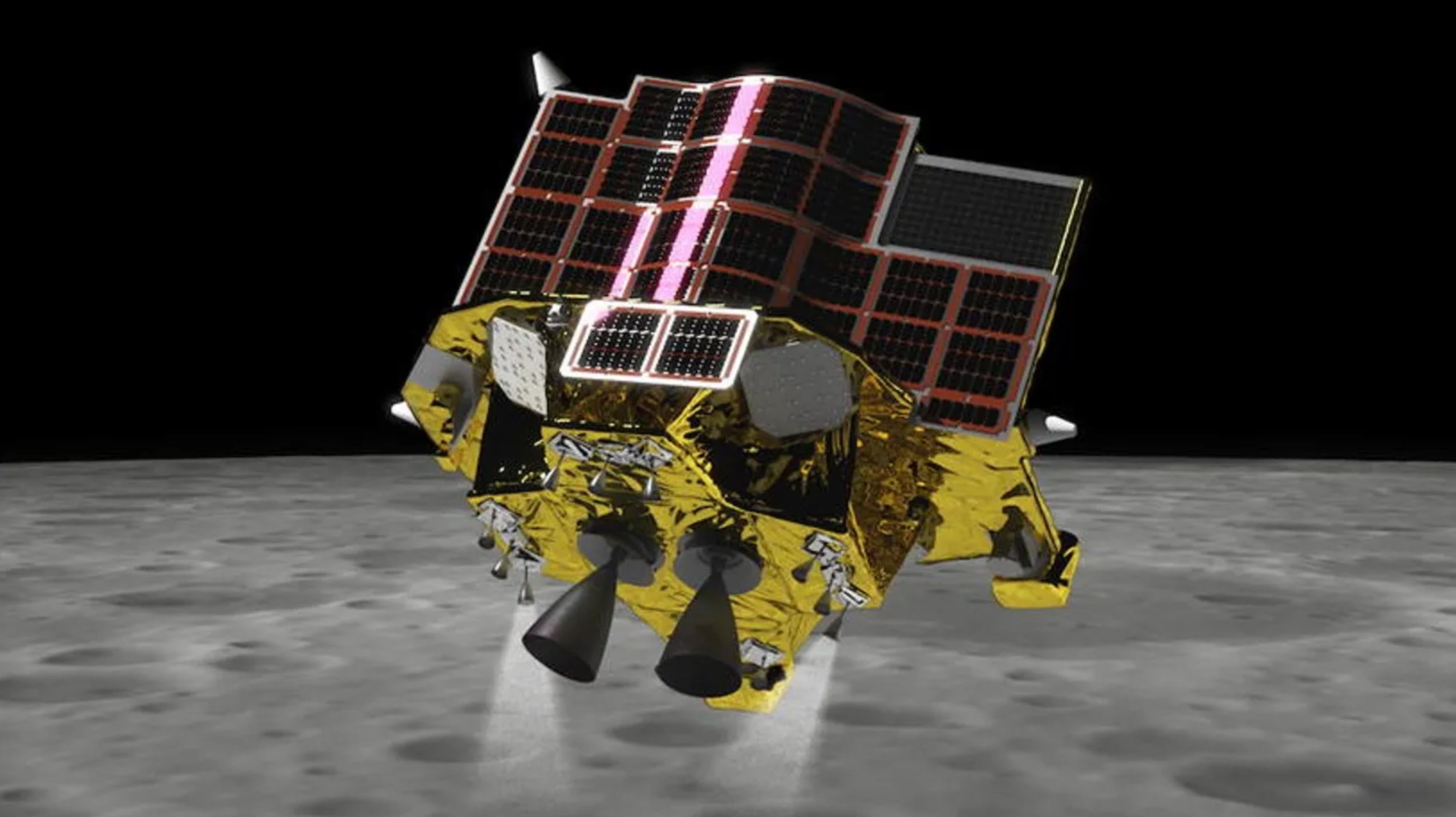BAKU, Azerbaijan — Japan’s SLIM spacecraft has completed a flyby of the moon as part of a months-long deep space journey to set up a lunar landing attempt.
The Smart Lander for Investigating Moon (SLIM) lander made its closest approach to the moon at 2:47 a.m. Eastern, Oct. 4. It passed just under 5,000 kilometers from the lunar surface at a relative speed of 1.47 kilometers per second.
The spacecraft is now on a long, looping orbit that will bring it back to the moon late in the year. The orbit will allow it to enter lunar orbit in a more propellant-efficient manner than needing to perform a long braking burn during the recent flyby.
Japan Aerospace Exploration Agency (JAXA) officials here at the 74th International Astronautical Congress say a landing attempt is expected in January.
SLIM launched Sept. 6 on a H-2A rocket from Japan’s Tanegashima Space Center along with the XRISM space telescope. The SLIM spacecraft then went through a series of systems checks and orbit-raising maneuvers as part of its circuitous voyage to the moon.
The spacecraft performed its translunar injection burn Sept. 30, firing its main engines for 39 seconds, a post from JAXA’s SLIM social media account confirmed.
The main objective of SLIM is to demonstrate a highly-accurate lunar soft-landing with a lightweight architecture.
The spacecraft has a dry mass of 200 kilograms and 700-730 kg wet mass. The expected development cost was 18 billion yen ($120 million).
The lander will aim to set down within a 100 meters of its target point on the slope of the mid-latitude Shioli crater. It features five crushable aluminum lattice legs which will help absorb the impact of landing and setting down on a slope.
It will use a vision-based navigation system and carries observational data from Japan’s SELENE orbiter launched in 2007. This system will be used to identify its landing zone during its autonomous descent and landing.
The lander could lead to lower cost exploration missions in the future, according to JAXA. The accuracy of landings will be useful for accessing areas of high scientific interest instead of more general, safer landing zones.
If successful, SLIM would make Japan the fifth country to soft land on the moon. In August India became the fourth nation to achieve the feat with its high latitude Chandrayaan-3 mission landing.
SLIM may not be the next landing on the moon however. Houston-based Intuitive Machines this week unveiled its completed first lunar lander. The Nova-C lander is scheduled for a mid-November launch from Kennedy Space Center on a Falcon 9.
That spacecraft will embark on a direct, five-day journey to the moon and enter lunar orbit. It will attempt to set down in Malapert crater, 300 km away from the lunar south pole. A safe landing would make it the first non-governmental spacecraft to successfully land on the moon.
